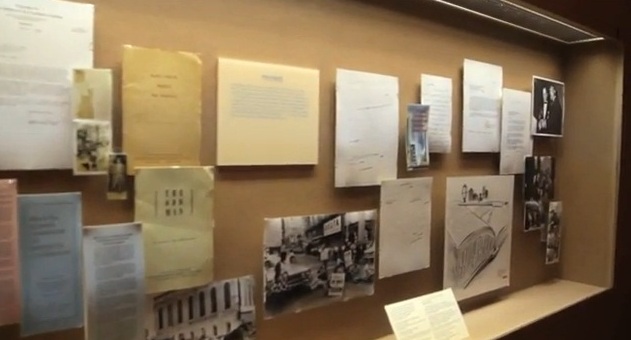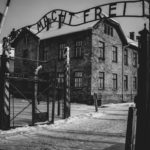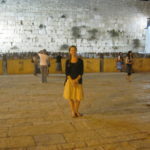Jewish Museums in Off-the-Beaten-Path American Cities

People often tell me that I’m ethnocentric. It’s true that, wherever I am, I try to identify anything that has a Jewish theme. Obviously when I’m in New York or Los Angeles, I don’t have to look hard but when I’ve had reason to travel in remote areas of North America, I’m often surprised to find venues that display information and objects that express how Members of the Tribe live, worship, celebrate and interact with their surroundings.
Some of the “off-the-beaten-path” Jewish museums and venues include:
Jewish Museums in Off-the-Beaten-Path American Cities
Jewish Museum of Oregon
When German Jews began to immigrate to America in the mid-1800s, most settled along the East Coast but some adventurous souls moved westward. In 1849, the first two German Jewish immigrants traveled to Oregon and settled in the frontier town of Portland. By 1853, there was a boardinghouse for Jewish bachelors (run by a Jewish woman) and the Jewish community continued to expand.
Portland is the home of the Jewish Museum of Oregon. When you walk into the museum, you begin to appreciate the sacrifices that the Jews made to come and live in the Pacific Northwest, in a region that had few amenities for Jewish settlers. I found the archives to be particularly impressive, with a wide range of documents, photos and artifacts that document Oregon’s Jewish community. There is also an oral history program that allows you to learn about Oregon’s Jewish community through the words of elderly residents themselves.
There are also temporary exhibits, which display Judaica which may not, necessarily, be unique to Oregon, but ensures that the museum stays dynamic and vibrant. I suggest checking out the museum’s schedule to find out when films, concerts and lectures are scheduled.

Jewish Museum of Charleston
It may seem funny to have a full-blown, high-quality Jewish museum in a city with a minuscule Jewish community but in point of fact, 17th century Charleston, South Carolina is the historical home of one of North America’s first Jewish communities. The South Carolina charter of 1669 specifically granted liberty of conscience to all residents, specifically noting “Jews, heathens, and dissenters” and Spanish, Portuguese and Dutch Jews saw Charleston as a haven where they could enjoy freedom of religion. Charleston continued to function as a center of Jewish life until well into the 20th century.
The Jewish Museum of Charleston displays a wide range of temporary exhibits that explore modern Jewish culture. I made the trip because I specifically wanted to see the museum’s permanent exhibition, Culture and Continuity: The Jewish Journey. This exhibition examines the Jewish experience of the last 4,000 years, as seen through art. As you walk through the display area you can see a diverse collection of archaeological objects, ceremonial implements, videos, photographs and other types of interactive media that expresses the American Jewish experience.
Charleston’s synagogue, a Sephardic Orthodox synagogue that was consecrated in 1749, became one of America’s first Reform temples when the changing demographics of the Charleston Jewish community indicated that the change was desired by the majority of the congregants. The Jewish Museum exhibition traces the history of this evolution as well as the Reform reinterpretation of Jewish traditions, the interaction of Jews with other cultures and the impact that these historical events have had on American Jewish life. Such an exhibit may not go down well in Boro Park but it is a fitting museum for the Jews of the Charleston area.
Breman Jewish Heritage Museum
Many Jewish communities have established Holocaust museums but the Breman Jewish Heritage Museum of Atlanta, Georgia tells the story of the Holocaust through explorations of the lives of over 400 survivors who made their way to Georgia and Alabama.
The museum shows, through documents, photos and especially through biographical details of the survivors, the progression of the Holocaust years through the persecutions, the ghettos, the concentration camps and final freedom.
Many of the Holocaust survivors that made their way to Georgia and Alabama have become successful and valued members of their communities. Their contributions to this museum, both financial and in their participation, is their way of contributing to Holocaust education in their community.

Milken Archives of Jewish Music
The Milken Archives of Jewish Music is based in Los Angeles. The Milken Foundation has created an archive that traces the history and the evolution of American Jewry through examination of its liturgy and music. Starting in the 17th century, with the first Sephardic Jews who arrived from Brazil, the Archives have documented the unique songs and chants that trace American Jewish history.
The first Jews in America were Spanish and Portuguese families who had escaped the Inquisition and moved to Holland. From Holland, they joined the expeditions to the New World but when the Inquisition arrived in South America, they fled northward to the new American colonies. These people brought their Iberian traditions and Sephardic culture with them. The first synagogues in America were Sephardic.
German Jews began to immigrate to America in the mid-1800s. By the late 1800s, the great immigration of over two million Eastern European Jews began. This wave would eventually create an American Jewish community that, until today, is mostly Ashkenazi. The Milken Archives trace these groups through their prayers, specifically Ashkenazi cantorial traditions. My research into American Jewish history has been greatly enhanced by these archives. The Milken Archive resources and materials are also available online.
Laurie Rappeport lives in Safed, Israel. She has researched extensively about Jews of the Middle Ages via the Lowell Milken Archives of Jewish Music, including the kabbalists who immigrated to Safed and the refugees from the Inquisition who established the first Jewish communities in America.








